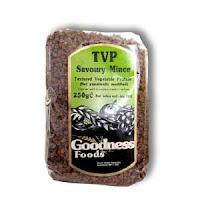How To Make Filipino Sausages | Longganisa
Monday, September 21, 2009
Longganisa or Filipino sausage is always a part of the Filipino everyday meals. This dish is usually prepared for breakfast together with an omelet. So, instead of having it bought from supermarkets, you can actually make your own longganisa.
Ingredients:
- 2 lbs ground pork
- 1 tbsp coarse salt
- ½ tsp Prague powder
- 1 tsp phosphate
- ¼ cup cold water
- ¼ cup TVP (Textured Vegetable Protein)
- 1 tbsp Isolate (Soy Protein Isolate)
- ½ tsp Carrageenan
- 2 tbsp sugar
- 6 tbsp garlic, minced
- 2 tbsp paprika (for color)
- 1 tbsp ground black pepper
- 2 tbsp pineapple juice
- ½ tsp meat enhancer
Procedure:
- In a large container mix the salt, Prague powder, phosphate, and water
- Add the Textured Vegetable Protein, Isolate, and Carrageenan
- Add the ground pork followed by the sugar, garlic, paprika, ground black pepper, pineapple juice, and meat enhancer then mix thoroughly.
- Place inside the refrigerator for 12 hours. (Note: Take note of the time. The mixture will smell sour if left for more than 12 hours)
- Shape and wrap the longganisa individually
Uncommon ingredients explained:

Coarse Salt or Kosher salt is a term that describes one of the most commonly used varieties of edible salt in commercial kitchens today. Kosher salt has a much larger grain size than regular table salt, and a more open granular structure. Like common table salt, kosher salt consists of the chemical compound sodium chloride. Unlike common table salt, Kosher salt typically contains no additives
Prague Powder

Prague Powder also known as Curing salt, is a combination that mostly composed of salt and a little sodium nitrate. Its use is mainly in curing meats for preservation. The nitrate component hinders the growth of botulism, a bacteria, that helps preserve the color of cured meat. Sodium nitrate breaks down more slowly and will preserve meats for longer periods of time. Some brands are dyed a pink color to blend better with meat and to help differentiate its appearance from other salts.
Phosphate

Phosphate is a source of Phosphorus, a nutrient vital to humans and is one of the most common substances in our environment, naturally occurring in our food and water. A single phosphorus compound can have a broad range of applications, one of them is to preserve the moisture and flavor in meat.
Textured Vegetable Protein

Textured Vegetable Protein (TVP) is used as a substitute for meat. It is made from soy flour (defatted). Some of its characteristics are: quick to cook, low in fat, and high in protein. TVP can also act as an extender; it can expand meats such as ground beef, ground pork, and ground chicken by 25 to 30 percent. A very versatile substance, it takes the texture of whatever ground meat that it is mixed with.
Soy Protein Isolate

Soy protein isolate is made from defatted soy meal by removing most of the fats and carbohydrates, yielding a product with 90 percent protein. Therefore, soy protein isolate has a very neutral flavour compared to other soy products. Because most of the carbohydrates are removed, the intake of soy protein isolate does not cause flatulence. Pure soy protein isolate is difficult to find in stores and is mainly used by the food industry and less by consumers. Maybe you can find it in health stores or in the pharmacy section of the supermarket.
Carrageenan

Carrageenans are sulphated polysaccharides that are extracted from red seaweeds. Because of its highly flexible molecules, it has the ability to form a variety of different gels at room temperature. They are widely used in the food and other industries as thickening and stabilizing agents.
I'll try doing this at home. The author said that if it's for personal consumption, we can ignore using phosphate, carrageenan and Prague powder. Hmm, if it clicks, maybe I could make some extra income out of it.
Images and recipe from www.panlasangpinoy.com


0 comments:
Post a Comment